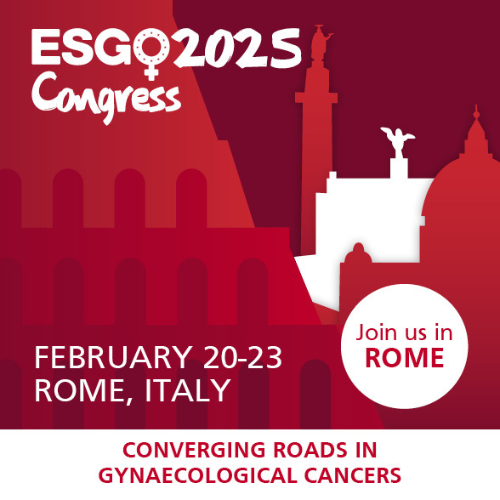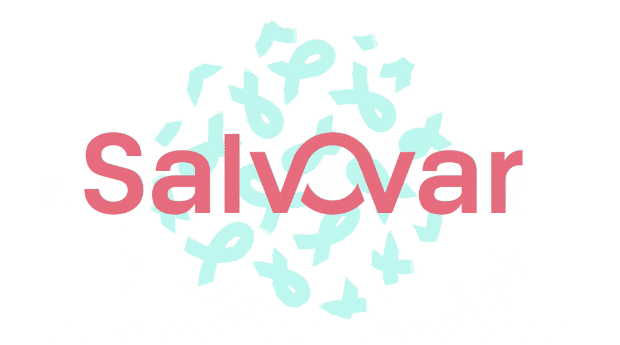Étude NOVA - Cancer Ovaire
Factsheet Study (Fiche descriptive de l'étude)
Ovarian study (Étude ovaire)
NOVA
Study Title (Titre de l'étude)
NOVA : A Phase 3 Randomized Double-blind Trial of Maintenance with Niraparib versus Placebo in Patients with Platinum Sensitive Ovarian Cancer.
Status (Statut)
Les inclusions sont closes.
Promoter (Promoteur)
TESARO
Goal (But)
The primary objective of this study is to evaluate efficacy of niraparib as maintenance therapy in patients who have platinum sensitive ovarian cancer as assessed by the prolongation of progression free survival (PFS). This objective will be independently evaluated in a cohort of patients with germline BRCA mutation (gBRCAmut) and in a cohort of patients who have high grade serous or high grade predominantly serous histology but without such gBRCA mutations (non-gBRCAmut). The effect of a biomarker classifier of deoxyribonucleic acid (DNA) repair status will be evaluated.
Secondary objectives include the following: (1) to bridge the centralized BRCA mutation test method to the candidate companion diagnostic test, if needed; (2) to evaluate additional measures of clinical benefit including patient reported outcomes (PROs), time from treatment randomization to the earlier date of assessment of progression on the next anti-cancer therapy following study treatment or death by any cause (PFS2), chemotherapy-free interval (CFI), and verall survival (OS); (3) to evaluate the safety and tolerability of niraparib compared to placebo in the indicated target population; (4) to evaluate QTc in a subset of iraparib-treated ovarian cancer patients.
Phase
Phase 3
Type of patient (Type de patiente)
Inclusion criteria (Critères inclusion)
1. Female, age at least 18 years
2. Patient agrees to undergo analysis of their germline BRCA status. (Testing must be completed prior to randomization. The sample may be submitted at any time prior to the screening period if it appears that the patient is likely to meet other eligibility requirements). To facilitate early testing, a separate informed consent form [ICF] specific for genotyping will be available to be signed prior to gBRCA status testing.
3. Histologically diagnosed ovarian cancer, fallopian tube cancer or primary peritoneal cancer
4. High grade (or Grade 3) serous or high grade predominantly serous histology or known to have gBRCAmut
5. Patients must have completed at least 2 previous courses of platinumcontaining therapy (e.g. carboplatin, oxaliplatin or cisplatin):
a. For the penultimate (next to last) platinum based chemotherapy course prior to enrollment on the study:
i. A patient must have platinum sensitive disease after this treatment; defined as achieving a response (CR or PR) and disease progression > 6 months after completion of their last dose of platinum chemotherapy (document 6-12m or >12m). (Source documentation required and may include physician or clinic notes).
b. For the last chemotherapy course prior to enrollment on the study:
i. Patients must have received a platinum-containing regimen for a minimum of 4 cycles
ii. Patients must have achieved a partial or complete tumor response
iii. Following the last regimen, patients must have either
1. CA125 in the normal range OR
2. CA125 decrease by more than 90% during their last platinum regimen which is stable for at least 7 days (i.e., no increase >15%)
iv. Following the last regimen, patients must have no measurable lesion >2 cm at the time of study entry
c. Patients must be randomized within 8 weeks after completion of their final dose of the platinum-containing regimen. Note: The last platinum regimen does not necessarily have to immediately follow the next to last (penultimate) platinum regimen. For example, if a patient received a non-platinum regimen between the penultimate platinum regimen and last platinum regimen, they could be eligible, so long as they meet all entry criteria.
6. The patient agrees to complete PROs during study treatment and at one additional time point 8 weeks following study treatment discontinuation. It is estimated that completion of PROs will take less than 20 minutes at each time point. Since these are questionnaires, their completion will not interfere with, or preclude, future treatment or clinical studies.
7. Formalin fixed, paraffin-embedded archival tumor available from the primary or recurrent cancer required for all patients.
8. Eastern Cooperative Oncology Group (ECOG) performance status 0-1.
9. Adequate organ function
a. Absolute neutrophil count (ANC) ≥1,500/mcL
b. Platelets ≥100,000/mcL
c. Hemoglobin ≥ 9g/dL
d. Serum creatinine ≤1.5x upper limit of normal (ULN) or calculated creatinine clearance ≥60mL/min using Cockcroft-Gault equation
e. Total bilirubin ≤1.5x ULN OR direct bilirubin ≤1x ULN
f. Aspartate aminotransferase (AST) and alanine aminotransferase (ALT) ≤2.5x ULN unless liver metastases are present, in which case they must be ≤5x ULN
10. Able to take oral medications
11. Women of childbearing potential must use adequate birth control for the duration of study participation.
Except criteria (Critères exclusion)
Drainage of ascites during last 2 cycles of last chemotherapy.
2. Palliative radiotherapy within 1 week encompassing >20% of the bone marrow.
3. Persistent > Grade 2 toxicity from prior cancer therapy.
4. Symptomatic uncontrolled brain or leptomeningeal metastases. (To be considered "controlled", CNS disease must have undergone treatment eg, radiation or chemotherapy at least 1 month prior to study entry. The patient must have no new or progressive signs or symptoms related to the CNS disease and must be taking a stable dose of steroids or no steroids.) A scan to confirm the absence of brain metastases is not required. Patients with spinal cord compression may be considered if they have received definitive treatment for this and evidence of clinically stable disease for 28 days.
5. Known hypersensitivity to the components of niraparib.
6. Major surgery within 3 weeks of starting the study or patient has not recovered from any effects of any major surgery.
7. Diagnosis, detection or treatment of invasive cancer other than ovarian cancer ≤ 2 years prior to randomization (except basal or squamous cell carcinoma of the skin that has been definitively treated).
8. Patients considered a poor medical risk due to a serious, uncontrolled medical disorder, non-malignant systemic disease or active, uncontrolled infection. Examples include, but are not limited to, uncontrolled ventricular arrhythmia, recent (within 90 days) myocardial infarction, uncontrolled major seizure disorder, unstable spinal cord compression, superior vena cava syndrome, or any psychiatric disorder that prohibits obtaining informed consent.
9. History or current evidence of any condition, therapy, or lab abnormality that might confound the results of the study, interfere with the patient's participation for the full duration of the study treatment, or is not in the best interest of the patient to participate.
10. Patient is pregnant or breast feeding, or expecting to conceive children within the projected duration of the study treatment.
11. Immunocompromised patients (note: patients with splenectomy are allowed).
12. Patients with known active hepatic disease (i.e., Hepatitis B or C).
13. Prior treatment with a known Poly (ADP-ribose) polymerases (PARP) inhibitor.
14. Patients with a baseline QT prolongation >470 msec.
15. Patients receiving concomitant medications that prolong QTc
Number of patients to be recruited (Nombre de patientes à recruter)
Approximately 490 patientes (international)
Primary endpoint (Critère principal d’évaluation)
Primary Efficacy Endpoint: Progression-Free Survival
PFS is defined as the time from treatment randomization to the earlier date of assessment of progression or death by any cause in the absence of progression. Progression will be assessed by RECIST v.1.1 criteria and clinical criteria using blinded central review by 2 independent radiologists and an arbiter if necessary as well as per blinded central clinician review.
The effect of a biomarker classifier of DNA repair status may also be evaluated.
Secondary Endpoints:
1. Concordance of the candidate companion diagnostic test compared to centralized BRCA mutation test, if needed
2. Observed changes from baseline in the following PROs:
a. FOSI
b. EQ-5D-5L
c. Neuropathy questionnaire
3. Outcomes for the next anticancer therapy following study treatment (best response, dose limiting toxicities, date of progression) will be collected using source documentation.
4. PFS2 is defined as the time from treatment randomization to the earlier date of assessment of progression on the next anti-cancer therapy following study treatment or death by any cause. Determination of progression will be by site physician clinical and radiographic assessment (clinic and radiology notes may serve as source documentation).
5. Chemotherapy-free interval (CFI) the time from last platinum dose until initiation of next anticancer therapy (excluding maintenance therapy). CFI relative to CFI from prior chemotherapy regimens will be evaluated (clinic notes may serve as source documentation).
6. Overall survival (OS) as measured from the date of randomization to the date of death by any cause.
7. Time to CA125 progression from time of randomization.
8. Evaluation of the effects of food on the PK of niraparib.







